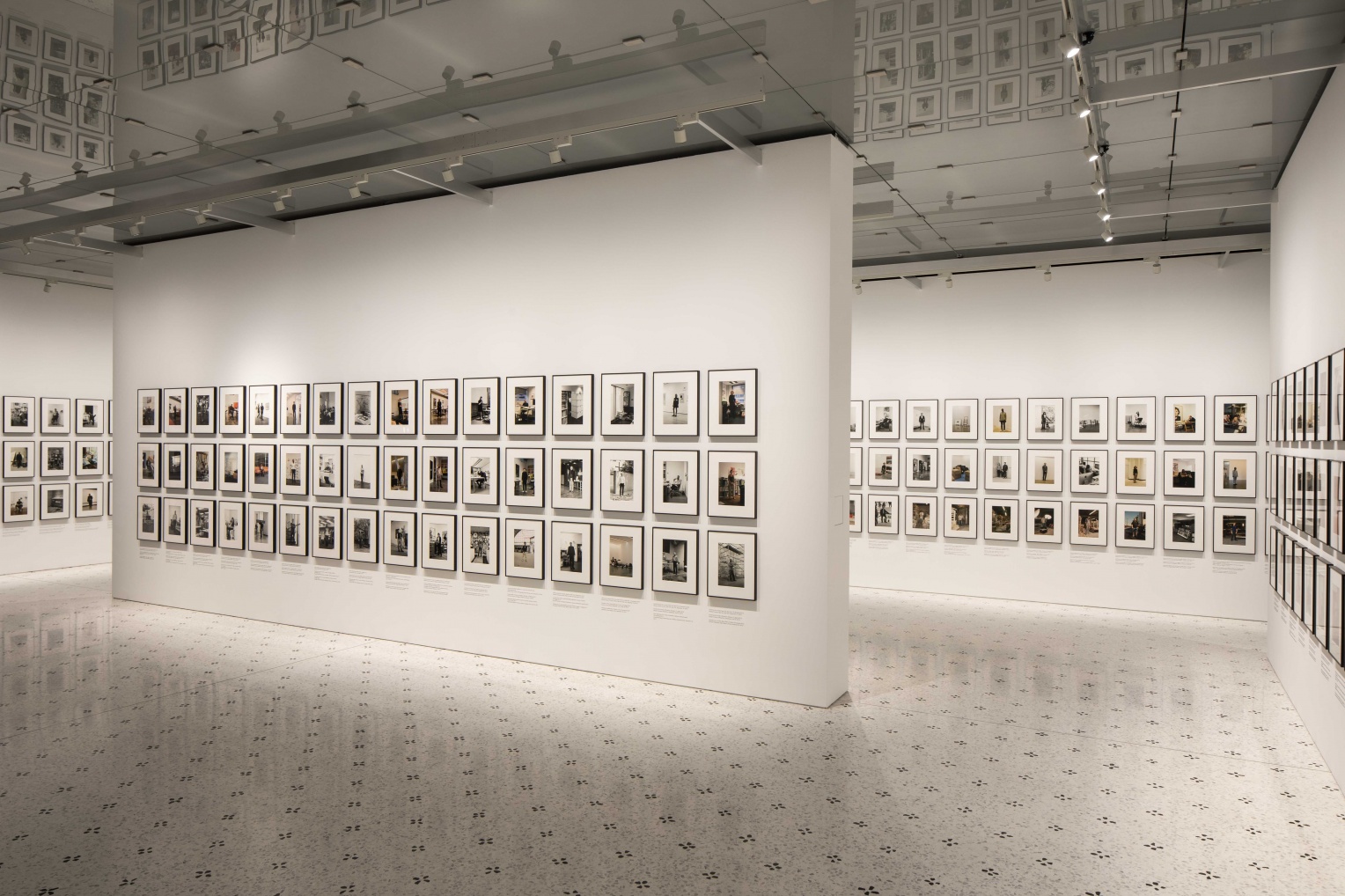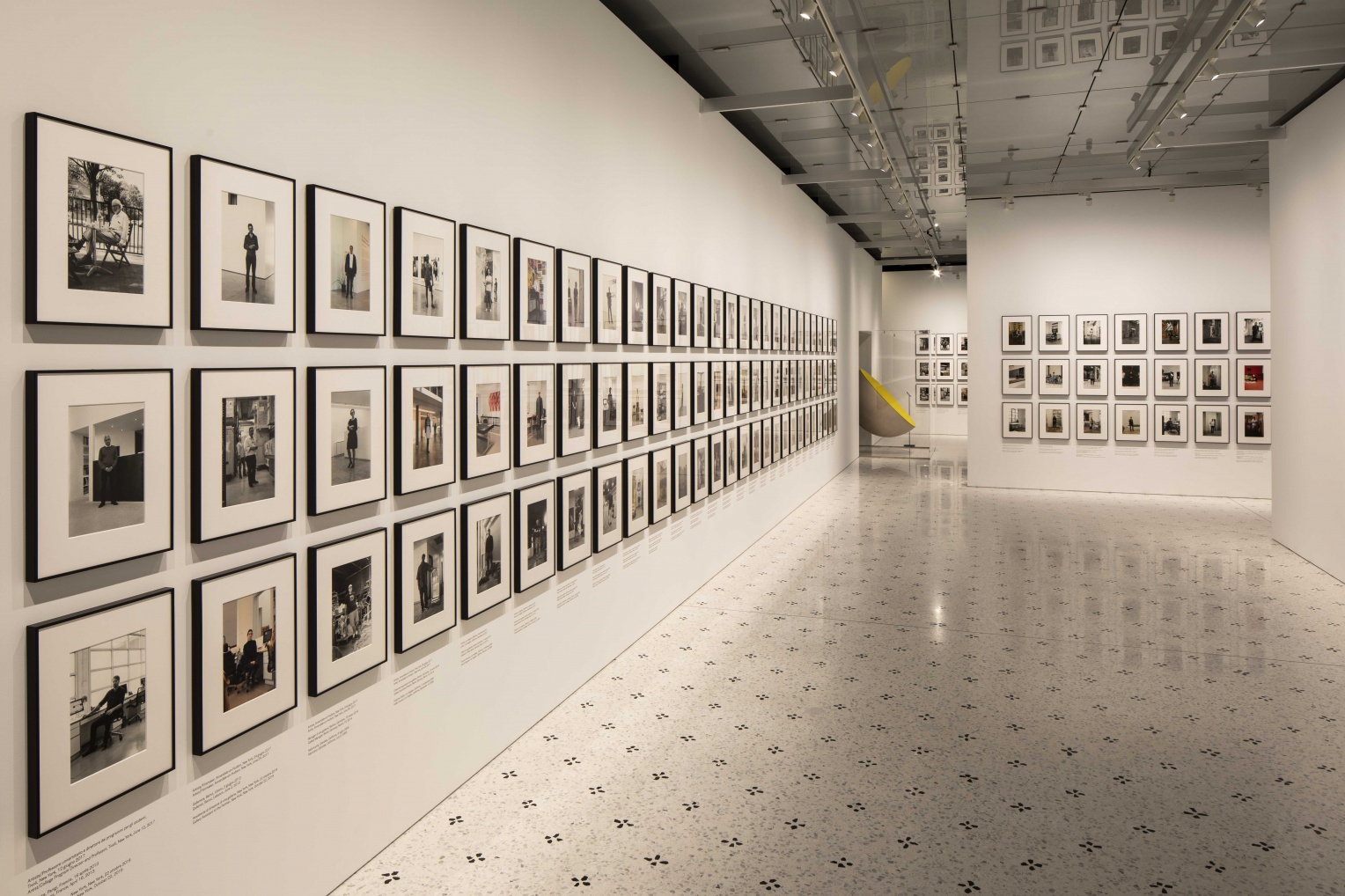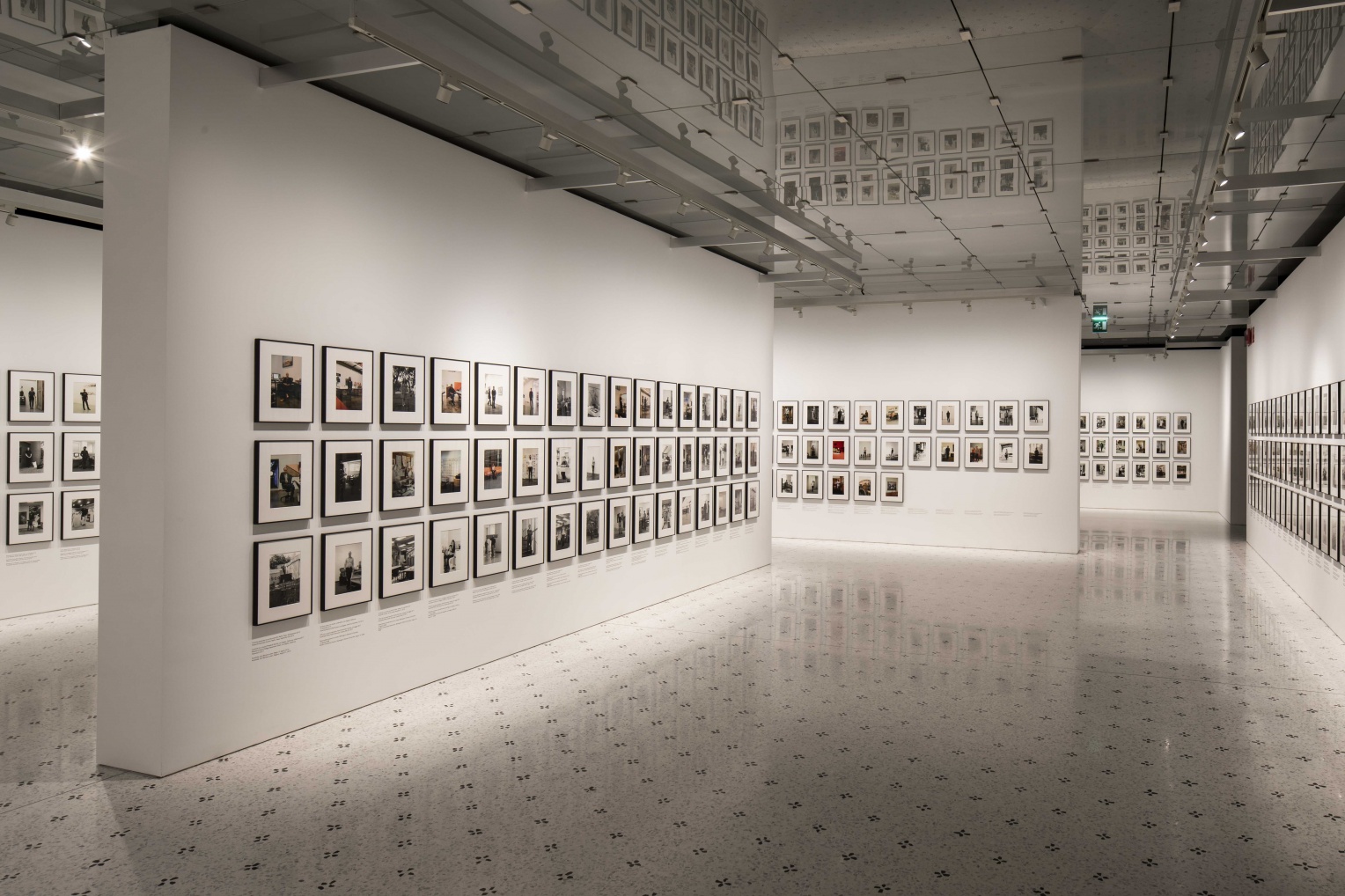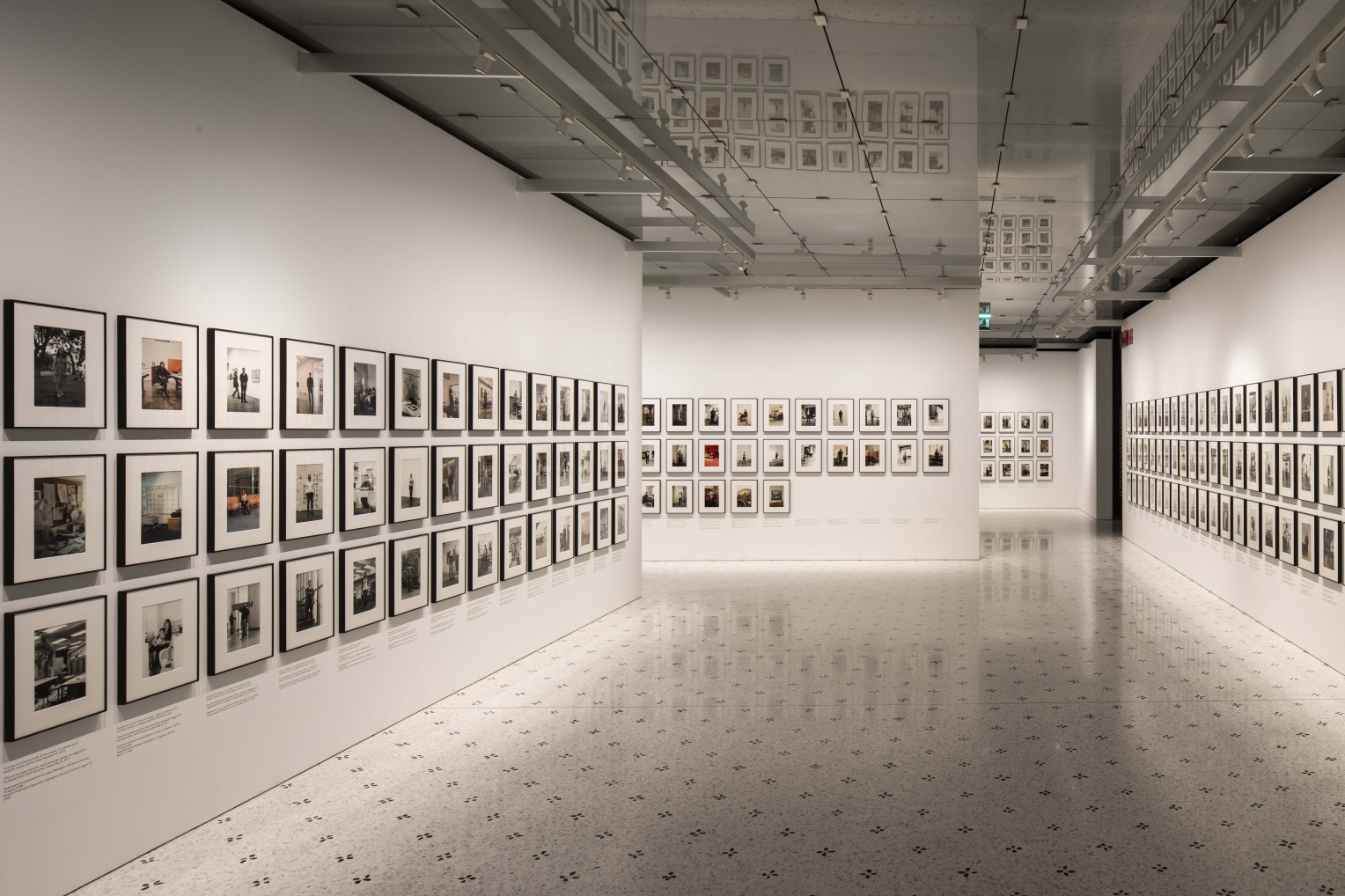It was early in his career when Walead Beshty decided that wherever he performed, wherever he set up exhibitions and acted as an artist, he would portray the people he worked with, at least some of them, the closest players in a particular place at a particular time, for example. Over the past 12 years, about 1400 people have been portrayed in this way. Many of them by means of a formalized procedure: Walead Beshty uses a 35 mm camera with an analogous, mostly black-and-white 36 mm film and photographs the people in their working environment with it. From the available image material he has so far selected 1 portrait per person. For the exhibition at MAST, 364 of the approximately 1400 portraits were selected and printed, divided into 7 groups of 52 pictures each.
The portraits appear standardized in a certain sense. They are not intended to express the character, the essence and the appearance, i.e. the essence of a person, as the studio portraits have often intended to do since the beginning of photography. Walead Beshty is much more interested in the people in their (and his) field of work, in the person and their function, the person and their role in the fabric of the art world, the art market. As a historical reference we can use the large-scale project "People of the 20th Century" by August Sander. Sander is also interested in the "farmer", the "lawyer", the "factory owner", the "dancer", as the symbiosis of person and profession, person and role and not so much in the essence of a single person. But this in a society that is clearly more hierarchical.
Walead Beshty calls these portraits "Industrial Portraits". On the one hand, we recognize in this title a reflection of his slightly standardized approach to photography, on the other hand, we read the exhibited and the total (and constantly increasing) 1400-1500 portraits as a form of portrait of an industry, the art industry, the art world, the constellation of producing, mediating, selling art and thinking about it. In this sense, the "Industrial Portraits" are a revelation of the actors in the art market, in a world that thinks of itself as having little hierarchical order. This aspect of disclosure is a central concern in all of Walead Beshty's work to date.
In the context of the theme of "Work Clothes and Uniforms", which is taken up in detail, historically and in relation to the present day, in the other exhibition at MAST, Beshty's 364 portraits reveal another trace, another manifestation: they tell of a world in which uniformed work clothes are an abomination, in which, as a sign of a highly individualistically differentiated social group, a kind of unspoken code of anti-uniform, the yes-not-uniform exists. Just don't look like the other person, the next person, just don't look like him or her, just don't look like him or her in uniform, in a ready-made outfit. At the risk that this negative definition may again prove to be a uniformed, a standardized attitude of all actors in this context. In spite of the great effort to achieve a singular, unique, personal appearance and existence of each of the portrayed actors, we remain context-dependent, we are often trapped in our personal and super-personal habitus.




